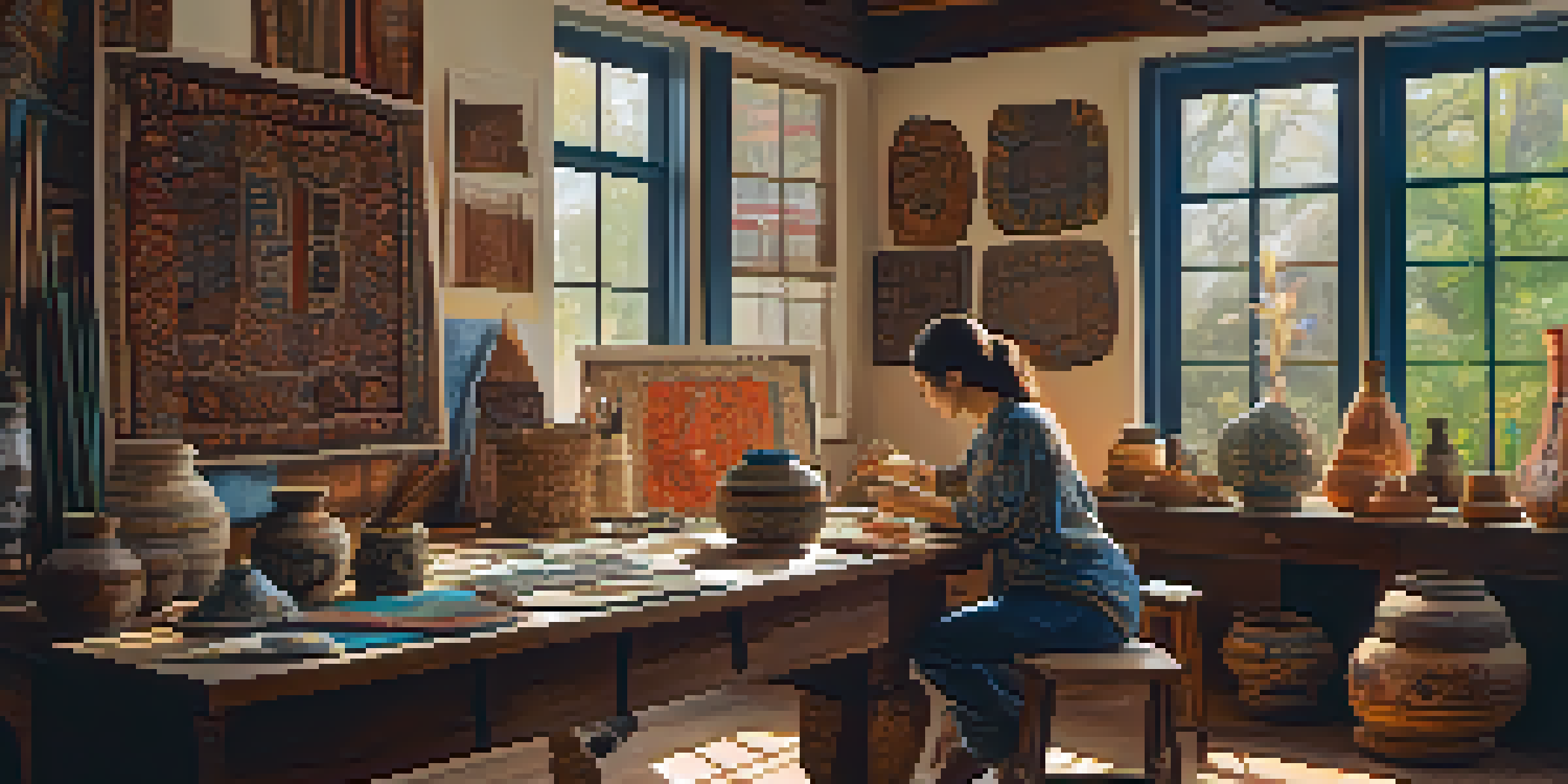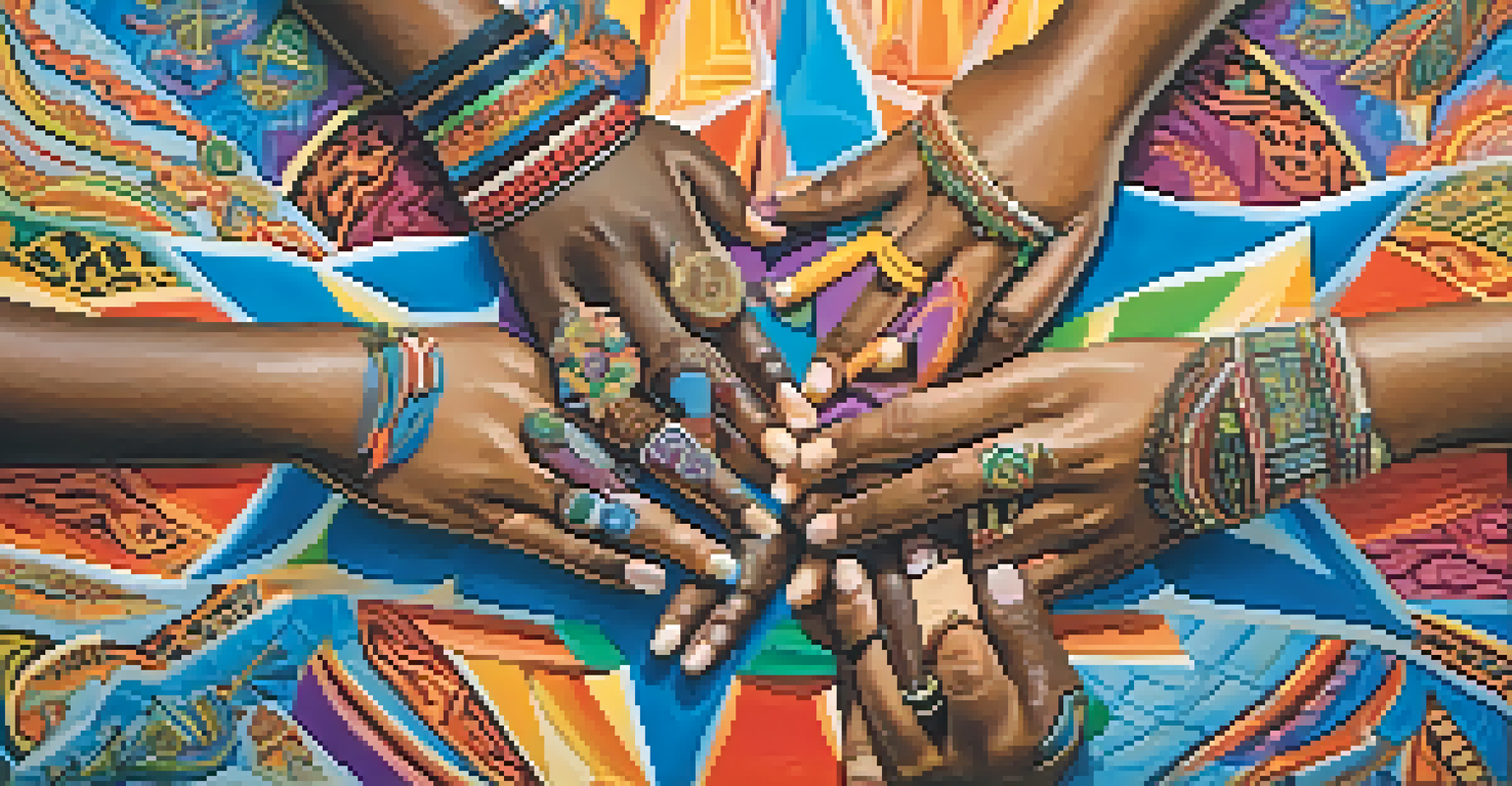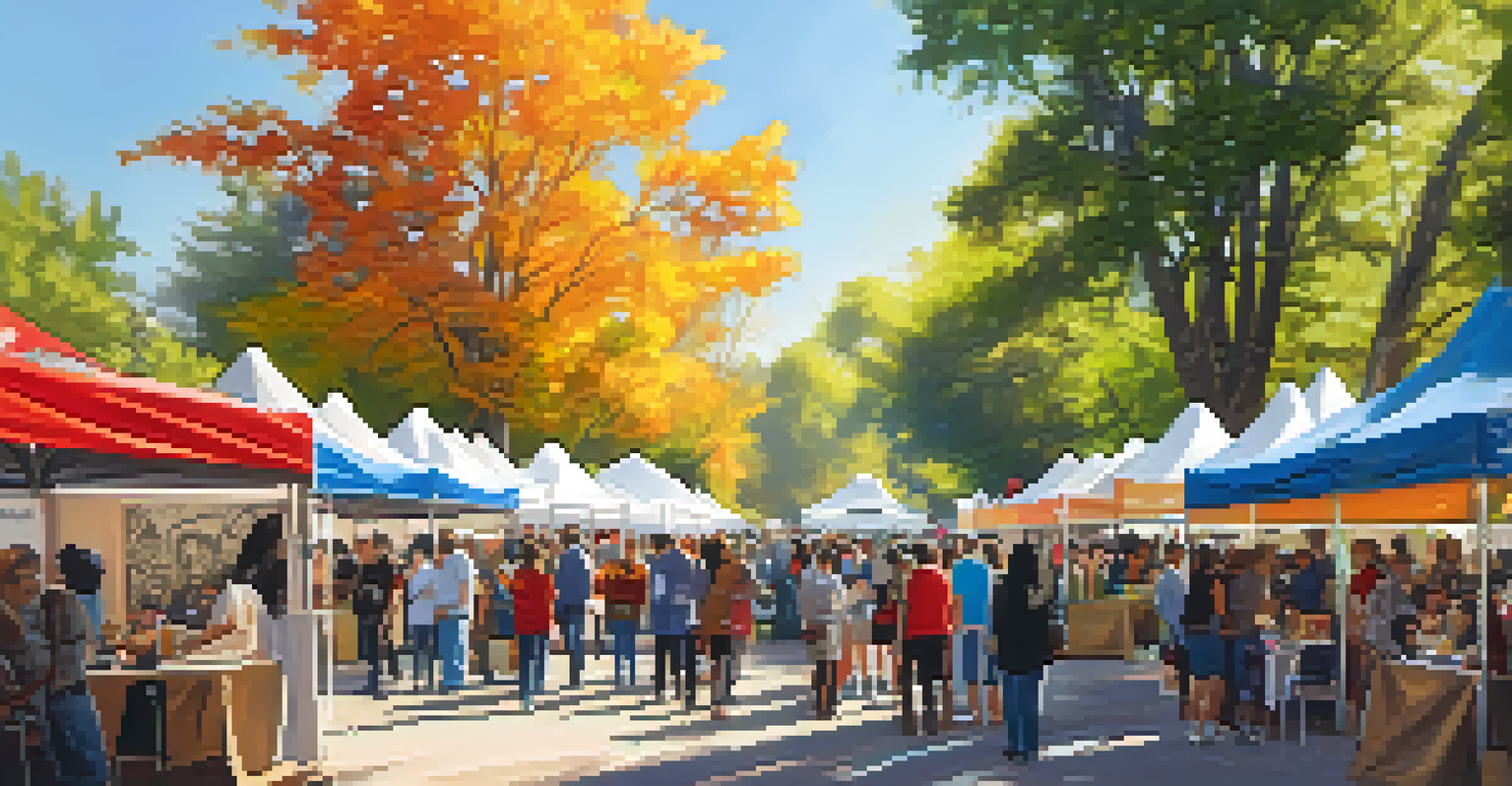Understanding Cultural Appropriation in Contemporary Art

Defining Cultural Appropriation in Art
Cultural appropriation refers to the adoption of elements from one culture by members of another, often without permission. In the realm of contemporary art, this concept can become particularly contentious as artists draw inspiration from diverse cultural backgrounds. Understanding the difference between appreciation and appropriation is crucial, as the latter can lead to misrepresentation and exploitation.
Art is the most beautiful of all lies; it is the most truthful of all truths.
For instance, when an artist uses traditional patterns from Indigenous cultures without context or acknowledgment, it can be seen as disrespectful. This not only ignores the cultural significance of those patterns but also diminishes the voices of the original creators. Thus, distinguishing between respectful homage and appropriation can be a fine line to walk.
Moreover, the impact of appropriation is often amplified by power dynamics, where dominant cultures exploit marginalized ones. This raises important questions about who gets to tell stories and represent cultures in the art world, highlighting the need for sensitivity and awareness in artistic practices.
Historical Context of Cultural Appropriation
Cultural appropriation is not a new phenomenon; it has historical roots that date back centuries. Throughout history, dominant cultures have often borrowed elements from marginalized cultures, sometimes leading to cultural erasure. For example, during colonial times, European powers often took artistic and cultural artifacts from colonized nations, stripping them of their original meaning and context.

In the 20th century, this practice continued, albeit in different forms, as many Western artists drew heavily from African, Asian, and Indigenous art. While some artists aimed to celebrate these influences, others commodified them without acknowledgment, raising ethical concerns. This historical backdrop is vital for understanding contemporary debates surrounding cultural appropriation in art.
Understanding Cultural Appropriation
Cultural appropriation involves adopting elements from one culture by another, often leading to misrepresentation and a lack of respect for original creators.
Recognizing this history can help modern artists navigate their creative processes more thoughtfully. Artists today have the opportunity to reflect on past injustices and strive for a more equitable approach in their work, fostering genuine dialogue rather than appropriation.
The Fine Line Between Appreciation and Appropriation
Distinguishing between cultural appreciation and appropriation can be challenging. Appreciation involves a respectful understanding and acknowledgment of a culture, while appropriation often lacks this context and care. For instance, an artist who collaborates with a community to create a piece that honors their traditions demonstrates appreciation, whereas one who simply borrows symbols without context may be appropriating.
Cultural appropriation is the act of taking or borrowing elements from a culture, usually without understanding or respecting the significance of those elements.
In this digital age, where art can be shared widely and quickly, the line can become even blurrier. Social media platforms can amplify both positive and negative examples, making it essential for artists to be mindful of their sources and the narratives they are engaging with. This awareness can foster richer artistic expressions that genuinely celebrate cultural diversity.
Artists can ask themselves key questions: Am I giving credit where it's due? Am I amplifying voices from the culture I'm drawing from? These self-reflective practices can help ensure that their work contributes positively to the cultural landscape rather than detracting from it.
Case Studies: Notable Examples of Cultural Appropriation
There are numerous case studies in the art world that illustrate the complexities of cultural appropriation. One notable example is the controversy surrounding the fashion brand Urban Outfitters, which faced backlash for selling Navajo-inspired products without consulting the Navajo Nation. This not only sparked outrage but also highlighted the commodification of indigenous cultures in commercial art.
Another instance is the work of some contemporary artists who have faced scrutiny for utilizing traditional motifs from cultures they do not belong to. These cases raise important questions about the ethical responsibilities of artists and the potential harm that can arise from appropriation. It serves as a reminder that while inspiration can strike from anywhere, respect and context are paramount.
Historical Context Matters
Recognizing the historical roots of cultural appropriation helps contemporary artists navigate their creative processes with sensitivity and awareness.
Such examples also open up discussions about accountability in the art community. They encourage both artists and audiences to engage in conversations about representation, respect, and the importance of giving credit to original cultural sources.
The Role of Artists in Addressing Appropriation
Artists play a crucial role in addressing cultural appropriation within their work. By choosing to engage with cultures respectfully and thoughtfully, they can help reshape the narrative around cultural exchanges. This involves not only understanding the origins of their influences but also being open to feedback from those communities.
For example, artists can engage in dialogues with cultural representatives or collaborate with community members to ensure that their work reflects authentic perspectives. This collaborative approach not only enriches the artwork but also fosters respect and understanding between cultures.
Furthermore, artists can use their platforms to raise awareness about cultural appropriation and advocate for marginalized voices. By being proactive in these discussions, they contribute to a more inclusive art world that values diversity and representation.
The Impact of Social Media on Cultural Appropriation
Social media has transformed how art is created, shared, and critiqued, significantly impacting discussions about cultural appropriation. Platforms like Instagram and TikTok allow artists to showcase their work to a global audience, but they also enable swift backlash when appropriation occurs. This increased visibility can lead to greater accountability in the art world.
Moreover, social media provides marginalized communities a voice in these conversations. When instances of appropriation arise, community members can share their perspectives and experiences, fostering a more inclusive dialogue. This democratization of discourse encourages artists to be more mindful of their influences and to engage with the cultures they draw from.
Artists' Role in Cultural Exchange
Artists can reshape narratives around cultural appropriation by engaging respectfully with cultures and collaborating with community representatives.
Ultimately, social media acts as a double-edged sword; while it can amplify appropriation issues, it also offers opportunities for education and growth. As artists navigate this landscape, they must remain attuned to the conversations happening around them and be willing to adapt.
Future Directions: Navigating Cultural Sensitivity in Art
As we look to the future, the challenge of cultural appropriation in art remains a pressing issue. Artists must navigate the complexities of cultural sensitivity while fostering creative expression. This requires a commitment to ongoing learning about the cultures they engage with and an understanding of their historical contexts.
Additionally, art institutions and galleries can play a pivotal role in promoting cultural sensitivity. By offering workshops, resources, and platforms for underrepresented artists, they can help cultivate a more equitable art world. This collaborative effort can empower artists and audiences alike to approach cultural influences with respect and integrity.

Ultimately, the future of art lies in understanding and honoring the diverse cultures that shape our world. By prioritizing genuine connections and fostering respectful dialogues, artists can create work that not only inspires but also uplifts the rich tapestry of human experience.